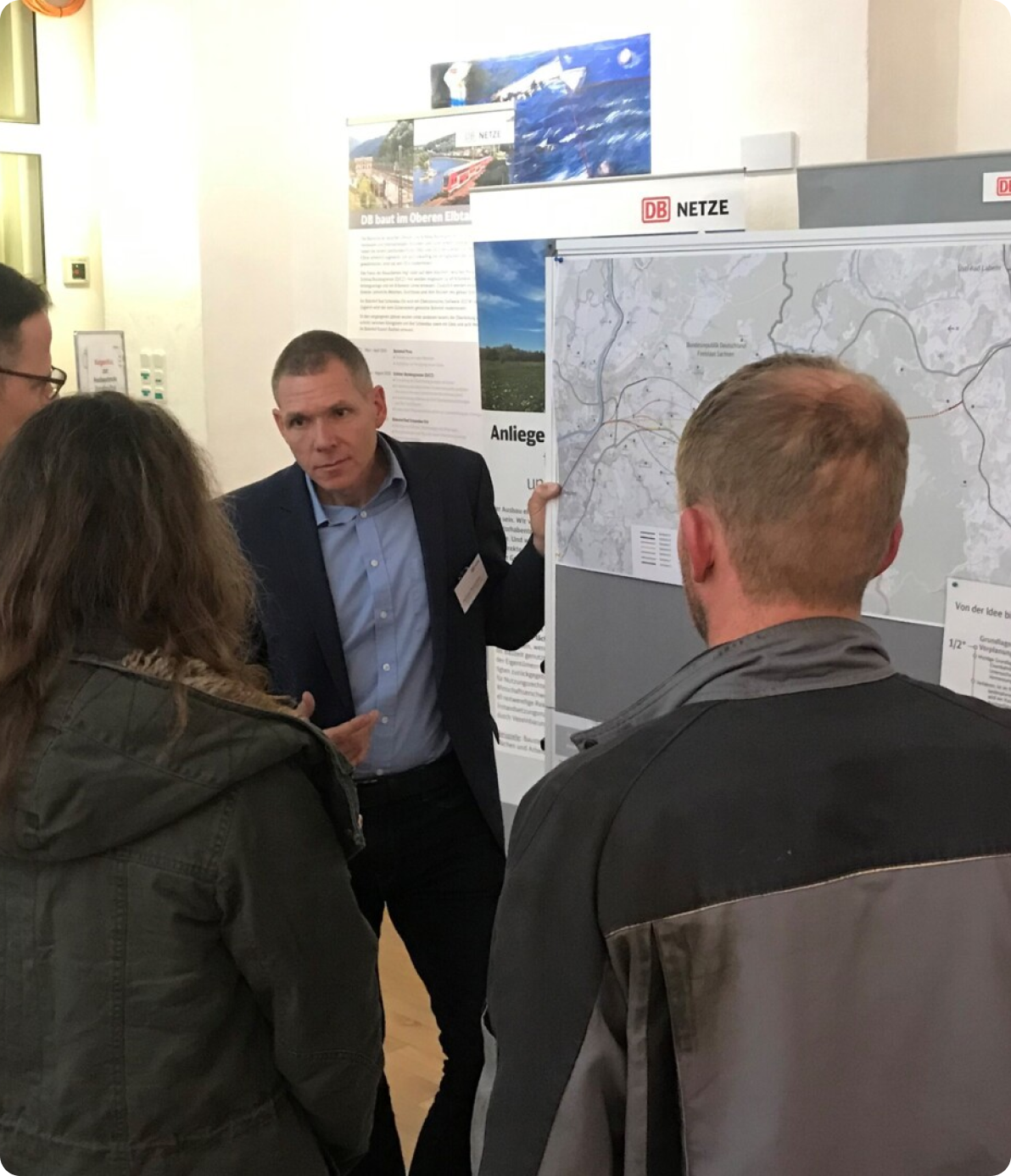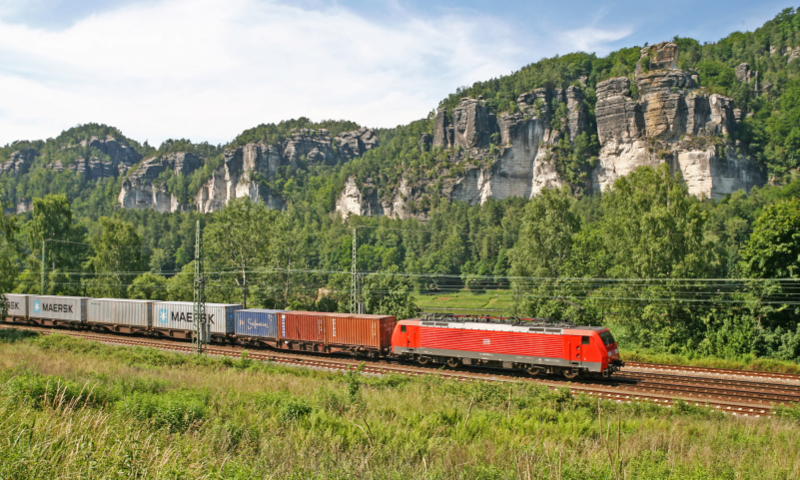From basic idea to construction
The Dresden – Prague railway project is constantly growing and evolving. As DB InfraGO AG and Správa železnic, we want to work out the best solution step by step. Take a look at the planning process.Joint planning area: From two main variants for the tunnel to the best
The section between Heidenau and Ústí nad Labem is our shared planning area, where DB and Správa železnic are working together on the route. Two main options for the Erzgebirgstunnel/ Krušnohorský tunel were developed during the preliminary planning: A full tunnel version with overtaking station in Heidenau, a design speed of 200 km/h and two- or four-track integration before the Erzgebirge Tunnel as well as a partial tunnel version with overtaking station in Goes, a final speed of 160/200 km/h and the valley bridge Seidwitztal.
The railway operation study (EBWU) showed that a full tunnel option with double-track integration into the tunnel offers optimal operational quality. Therefore, the full tunnel option with a four-track integration into the tunnel, which would be associated with greater interference with protected assets, is not being pursued any further.
Then we compared a full tunnel and a partial tunnel with a two-track integration into the tunnel. We used a catalogue of criteria, in which the topics of environment, infrastructure and economic viability were compared. They were weighted equally, each one third – the result: The full tunnel variant is the best option. Based on the catalogue of criteria, the decision was made in favour of the full tunnel variant.
Overview of the milestones
- 2017 – 2020: Feasibility studies were carried out.
- December 2019: DB AG and Správa železnic sign the planning contract for the new Dresden – Prague line.
- September 2021: DB InfraGO AG and the Saxon State Office for the Environment, Agriculture and Geology (LfULG) sign a declaration of intent for the new Dresden – Prague line.
- Summer 2022: Commencement of the update of the regional spatial planning documentation (Ústecký Region) – anchoring of the corridor on the Czech side.
- November 2022: Presentation of two options (on German territory) for the railway tunnel between Heidenau and the Czech transport hub Ústí nad Labem.
- January 2023: Finalisation of the infrastructure criteria catalogue (German side).
- End of 2024: Finalisation of the preliminary planning for the route and submission of the preferred option to the German Bundestag.
- End of 2024: Start of the EIA process on the Czech side for the selected variant.
- From 2025: Start of the planning approval procedure (procedure to obtain building permission) in both countries.
- Once planning permission has been granted, the construction can be implemented.
The process of authorisation for two different countries
Experts from both countries are working closely together on the project, with each implementing procedure in their respective countries. At the beginning of 2024, the Czech Construction Act will be amended, which will shorten the approval procedure and bring it closer to the German procedure.

Cross-border tendering and contracting
In December 2019, Správa železnic and DB InfraGO AG as well as DB Energie GmbH concluded the planning agreement on cooperation in the joint planning area of the new Dresden – Prague line. The joint planning area runs from the tie-in point in Heidenau through the heart of the project, the Erzgebirgstunnel, to the tie-out point on the Czech border in the Chabařovice area.
In May 2020 and in a revised form at the end of August 2020, a first joint call for tenders for the project management between Heidenau and Ústí nad Labem was published. In January 2021, the contract was awarded to a bidding consortium “Projektsteuerung NBS Dresden – Prag” under the management of the companies Vössing Ingenieurgesellschaft mbH and Schüßler-Plan GmbH within the framework of a Europe-wide award procedure. A consortium of several offices under the name INGENIEURGEMEINSCHAFT PA2 Erzgebirgstunnel became the main designer for the LPH 1-2 phase (for the Czech Republic in the details of the Zoning Decision Documentation). They used BIM methodology because of better transparency and accessibility of the design.



